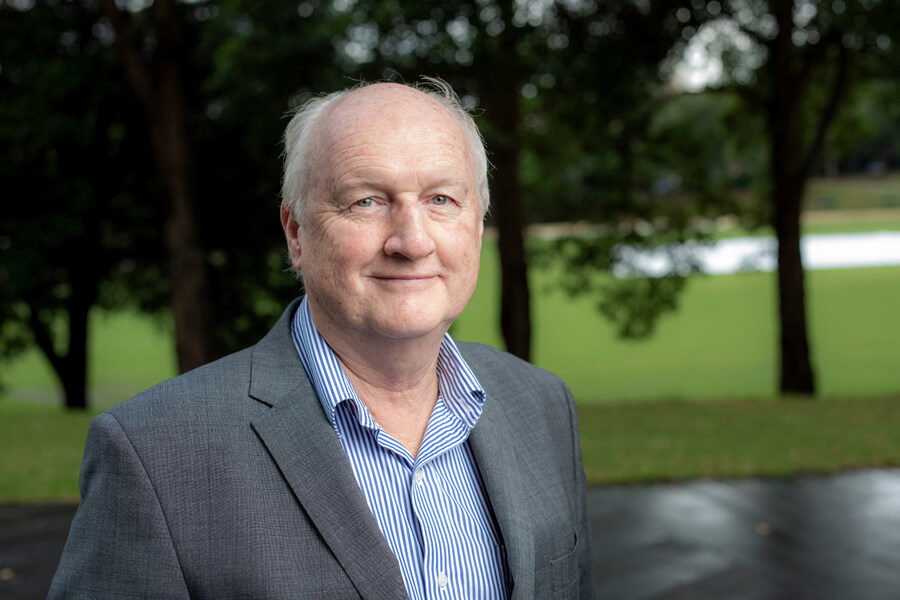10 lessons the prevention community can take from Australia’s COVID-19 response

DATE
TYPE Prevention Centre News
I have been privileged to be an ‘informed observer’ of Canberra’s COVID-19 response through my committee memberships and my relationships with some of those who have been making decisions. In the second year of the response, we are able to look back critically and try to learn from it. I think there are 10 important lessons for those of us researching the prevention of chronic disease.
1. Strong leadership is crucial
Throughout the pandemic, there has been extraordinary leadership from the chief health officers in every state and territory and the Commonwealth, and all should be congratulated.
We have clearly seen the importance of political commitment to get things done. It has been interesting to see how our political leaders have trusted the science and their scientific advisers – when there has traditionally been resistance to this with regards to other threats to global health such as obesity and climate change.
Researching why our leaders responded as they did to COVID-19 will provide insights for prevention. It also highlights the importance for prevention leaders who understand the political landscape to be in the room when decisions are made to ensure our agenda is heard and acted on.
2. Australia needs investment in the public health workforce
The way the public health community has responded to COVID-19 has been spectacular – as has the response of the broader health community.
There has been substantive investment in the public health workforce, with hundreds of new people employed to help with contact tracing, for example. In addition, people from a wide range of sectors have worked alongside us and have been critical to the effectiveness of our response. We need to keep these people engaged, and to work out how we can maintain and build on the skills and strengths of this broader group.
It strikes me that there is little we have learned from responding to COVID-19 that we had not already learned from previous pandemics such as SARS and H1N1. In some respects, we have had to rediscover what we learned in the past. It will be important to maintain our public health corporate memory so that we are appropriately positioned to cope with the next (inevitable) pandemic.
3. The critical role of rapid intelligence assessment and sharing
There has been a massive volume of research published about COVID-19 in the last 12 months. It has been impressive to watch evidence rapidly synthesised and provided in real time to inform policy.
The prevention research community is well positioned to take these skills forward and provide policy with clear and coherent evidence-based messages that will promote better health.
The dependence on and trust in modelling has been rather ironic when we have spent so long promoting our own models based on evidence synthesis. However, in the crisis we have seen the power of data mining and linkage to inform decision-making, and I hope that the current level of trust in these methods will continue to allow us to make better use of data in our own work.
4. The health agenda goes beyond health
The impacts of the health response that went beyond health could not have been more dramatic. We have closed our borders, established a welfare state, disrupted the economy and temporarily removed the population’s liberty.
This is a reminder that health has important economic and social impacts, and also that things beyond our control – such as the casualisation of the workforce – can have important impacts on the health agenda.
For prevention, we must not forget to consider the real world in which people live and how that affects their ability to lead healthy lives.
5. We need better integration between public health and the health system
The powerhouse of our COVID-19 response has been in locally based public health. This has been crucial in understanding local circumstances and conditions to generate appropriate local responses.
We have seen the need for a joined-up health system, with public health working hand in hand with clinical services. In this regard, I can say that the Aboriginal Community Controlled Health Organisations have been the leading primary healthcare organisations for Australia, and one of the very few places where we see a truly integrated model of public health and healthcare delivery.
Integrating public health with the health system is something with which we have struggled in prevention, and we would do well to learn from the experiences of the pandemic response.
6. Inconsistency has been a barrier to implementation
I fear one of the lasting criticisms about Australia’s COVID response will be about implementation inconsistencies between states and territories and the Commonwealth – and these are generally the things that have mattered to people.
While there is much to learn about implementation from the COVID response, we should not forget that coordination and consistency are key for prevention of chronic disease, too.
7. Equity is paramount
The COVID-19 response has not been without consequences for some. We have been worried about elements of repression and coercion in some communities, and have been at risk of stigmatising those with whom we are trying hardest to engage. Globally, we have seen the implications of race, poverty, the north/south divide, and inequality around distribution of PPE and vaccines.
I believe that now we have an opportunity to reframe the dialogue around equity and chronic disease. The message for prevention is that we as a community are as vulnerable as our most vulnerable. To become a pandemic-resilient nation, we must support health for all.
8. We need to respond to misinformation
Throughout the pandemic, there has been some very prominent resistance to sensible public health measures, in Australia as well as internationally. We have seen the importance of informed communities, and the need to respond rapidly to misinformation, low literacy and non-English literacy.
Understanding and analysing the extreme aversion of some to the nanny state will offer important insights for the prevention of chronic disease.
As prevention researchers, we have a role in offering an evidence-based counter view, identifying hotspots of misinformation, and understanding the local conditions that might be driving these opinions.
9. We need more prevention research
The pandemic has shown us the power of multidisciplinary research in action, and there is currently an interest in prevention research.
There is much left to do. There is a real need now for behavioural research, and we should promote our methods to raise the profile of this. We also need a greater focus on health economics research, to answer important questions such as the trade-offs between health and the economy.
I think other areas where research is needed include the potential of digital health and eHealth, data linkage, and how to communicate the uncertainty inherent in modelling without undermining the value of modelling.
10. There is an extraordinary opportunity to make the case for prevention
COVID-19 may prove to have been a teachable moment for the public as well as our politicians and decision makers when it comes to chronic disease.
It has clearly shown the links between disease and productivity, health expenditure and the capacity of the health system. We also know there is a relationship between COVID-19 and obesity, as evidenced by the World Obesity Federation’s recently released Atlas that showed the majority of COVID-19 deaths have been in countries with high levels of obesity.
During the pandemic, governments have been willing to go to extreme lengths to respond to the problem. For the prevention of chronic disease, our challenge is how to create that sense of urgency for future action.



